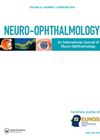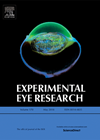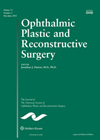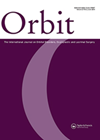
Journal Reviews archive for 2014
Effect of oxygen levels on binocular summation of dark vision
Previous studies have reported conflicting results on the existence of binocular enhancement of dark vision. This study compares monocular and binocular absolute thresholds of dark adaptation in two different populations (healthy individuals and those with chronic respiratory insufficiency). The study...
Ocular blood flow changes in Behcet disease
This study evaluates ocular blood flow changes in both ocular Behcets disease (BD) and non-ocular BD (with or without thrombotic disease) and compares these findings with a healthy control group. A total of 90 eyes with BD were evaluated with...
A rare case of post-traumatic central retinal artery occlusion
Central retinal artery occlusion is rarely associated with traumatic optic neuropathy, this case report details of one such case. The reported case is of a ten-year-old boy presenting after a fall from height with loss of vision in one eye....
Two case reports of late onset adbucens nerve palsy following carotid-cavernous fistula treatment
This report presents two cases of abducens palsy developing with late onset following endovascular treatment for carotid-cavernous fistula. Following this common and effective treatment for carotid-cavernous fistula, an immediate cranial nerve palsy is a common finding. It usually resolves spontaneously....
Choroidal and macular thickness in nonarteritic anterior ischaemic optic neuropathy
This study evaluates the choroidal and macular thickness in patients with chronic nonarteritic anterior ischaemic optic neuropathy (NA-AION). Two groups of subjects were compared, group one included 20 eyes with chronic NA-AION and group two, 31 healthy control eyes. The...
Ocular ischaemic syndrome in a rat model
Ocular Ischaemic syndrome is a devastating eye disease caused by severe carotid stenosis. This study’s purpose was to develop a reliable rat model for this syndrome by subjecting rats to common carotid artery occlusion and sham surgery. Rats were assigned...
Reliability of kinetic perimetry in children and young adults
This study reports on normative visual field area, feasibility and repeatability of testing for a large sample size of healthy children and young adults, using Octopus semi-automated kinetic perimetry. Sample included 221 healthy volunteers aged 5-22 years. The study was...
Early intraocular complications of aneurysmal subarachnoid haemorrhage
The aim of this study was to estimate the incidence of a whole spectrum of early intraocular complications in patients suffering from aneurysmal subarachnoid haemorrhage (SAH) and to identify factors that are potentially associated with these fundus findings. In total...
Gender and ethnicity related differences in optic nerve head
The authors investigated the effect of ethnicity and gender on optic nerve head morphology comparing Indian and Caucasian males and females. The optic nerve head was investigated using spectral-domain optic coherence tomography (SD-OCT). Results showed that disc and rim areas...
A mouse model for uveal melanoma
Uveal melanoma (UM) is the most common malignant tumour arising within the eye and is a severe threat for both sight and life, due to a high risk of metastasis. There are no animal models of UM, but the Tg(Grm1)...
A tarso-conjunctival flap for paralytic ectropion
This is a review of 110 patients with paralytic ectropion who underwent a lateral tarso-conjunctival flap procedure. The technique involves fashioning a 4-8mm wide lateral tarso-conjunctival flap in a similar way to a lateral Hughes flap. This is then sutured...
The presentation of natural killer / T cell lymphoma to the oculoplastic surgeon
The authors present three cases of periorbital extranodal natural killer / T cell lymphoma (ENKL). Ages were 20, 45 and 55. All of these patients presented with painless eyelid swelling and a history of sinus disease. One patient had persistent...








